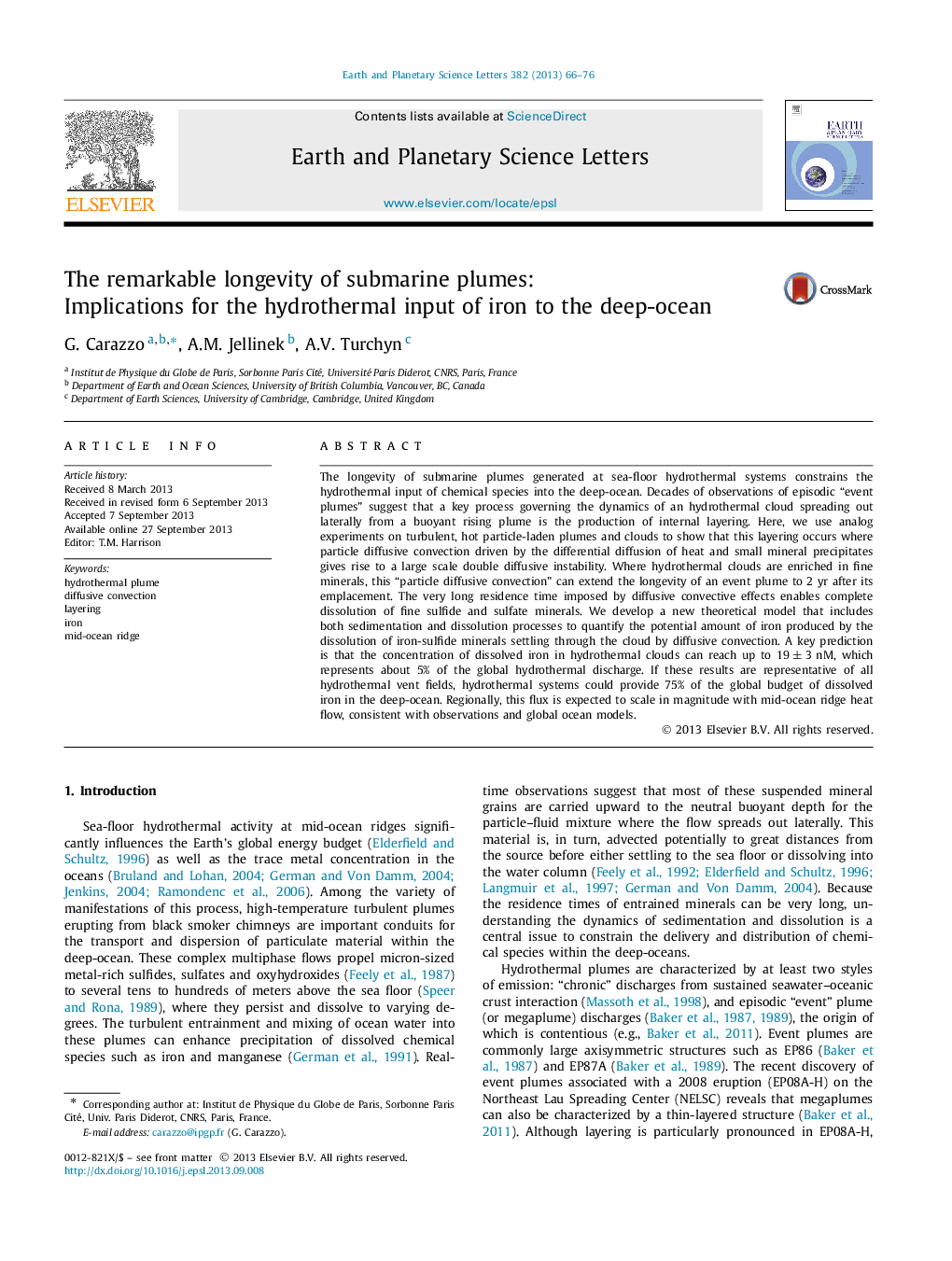| کد مقاله | کد نشریه | سال انتشار | مقاله انگلیسی | نسخه تمام متن |
|---|---|---|---|---|
| 6429963 | 1634774 | 2013 | 11 صفحه PDF | دانلود رایگان |
- We present laboratory experiments simulating hydrothermal submarine plumes.
- Sedimentation from submarine clouds is driven by particle diffusive convection.
- This process can extend the longevity of event plumes to 2 yr.
- Complete dissolution of fine sulfide minerals occurs prior to their sedimentation.
- Hydrothermal clouds could provide 75% of the global dissolved iron in the deep-ocean.
The longevity of submarine plumes generated at sea-floor hydrothermal systems constrains the hydrothermal input of chemical species into the deep-ocean. Decades of observations of episodic “event plumes” suggest that a key process governing the dynamics of an hydrothermal cloud spreading out laterally from a buoyant rising plume is the production of internal layering. Here, we use analog experiments on turbulent, hot particle-laden plumes and clouds to show that this layering occurs where particle diffusive convection driven by the differential diffusion of heat and small mineral precipitates gives rise to a large scale double diffusive instability. Where hydrothermal clouds are enriched in fine minerals, this “particle diffusive convection” can extend the longevity of an event plume to 2 yr after its emplacement. The very long residence time imposed by diffusive convective effects enables complete dissolution of fine sulfide and sulfate minerals. We develop a new theoretical model that includes both sedimentation and dissolution processes to quantify the potential amount of iron produced by the dissolution of iron-sulfide minerals settling through the cloud by diffusive convection. A key prediction is that the concentration of dissolved iron in hydrothermal clouds can reach up to 19±3 nM, which represents about 5% of the global hydrothermal discharge. If these results are representative of all hydrothermal vent fields, hydrothermal systems could provide 75% of the global budget of dissolved iron in the deep-ocean. Regionally, this flux is expected to scale in magnitude with mid-ocean ridge heat flow, consistent with observations and global ocean models.
Journal: Earth and Planetary Science Letters - Volume 382, 15 November 2013, Pages 66-76
